In order for the flower garden to please others for a long period, it is recommended to choose perennial plant species as the basis. To refresh the territory, it is necessary to plant annuals every season. It remains only to choose garden flowers, get acquainted with the rules of their cultivation and the principles of care.
Material Content:
Perennial garden flowers: catalog with photos and names

Each summer resident has a list of favorite flowers to ennoble the site. Usually this includes eukaryotes, which are highly decorative and easy to care for. Consider perennial garden flowers, which are especially popular.
Spring flowers perennials
Peony
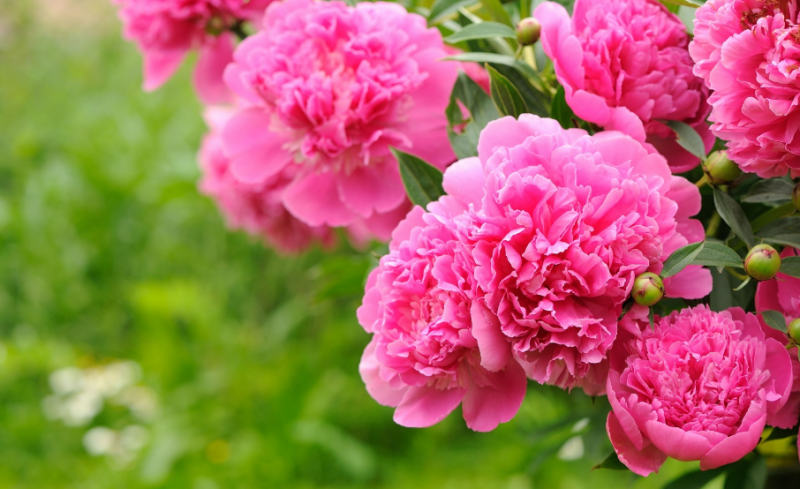
This is a powerful plant that has a pleasant fragrance. Peony blooms in spring. In one place it can grow for more than 20-30 years without a transplant. Cultivation does not take much effort. Much attention is paid to choosing a suitable place. It should not be in the shade. Unwanted drafts.
Peony grows excellently on loam. They transplant it in late August or early autumn, and are not watered too often.
Pansies
They are also called "viola."
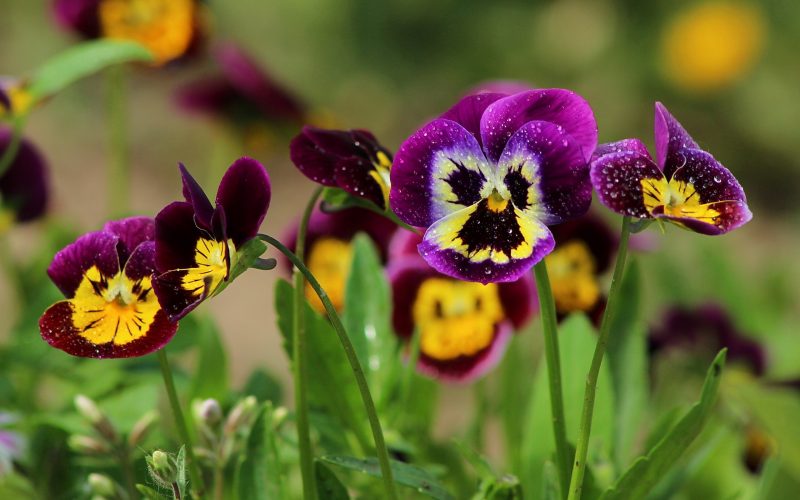
Flowers have a large number of shades:
- white;
- blue;
- yellow;
- reddish;
- the black.
Preferred conditions for the growth of pansies are the sunny area and moist loamy soils. It is important to regularly feed them with superphosphate and ammonium nitrate.
Persian poppy

Early in spring, light green leaves appear from under the snow, and at the beginning of summer large bright corollas of the Persian poppy are shown. This is a tall plant, in perfect harmony with other flowers. It is used as a background for low representatives of the garden, as a separate copy of the flower garden.
To prevent the stem from laying on the ground, it is necessary to establish a support. Poppy does not tolerate excessive watering. The best place to grow is the sunny side with fertile soil.
Perennials blooming in summer
Iris
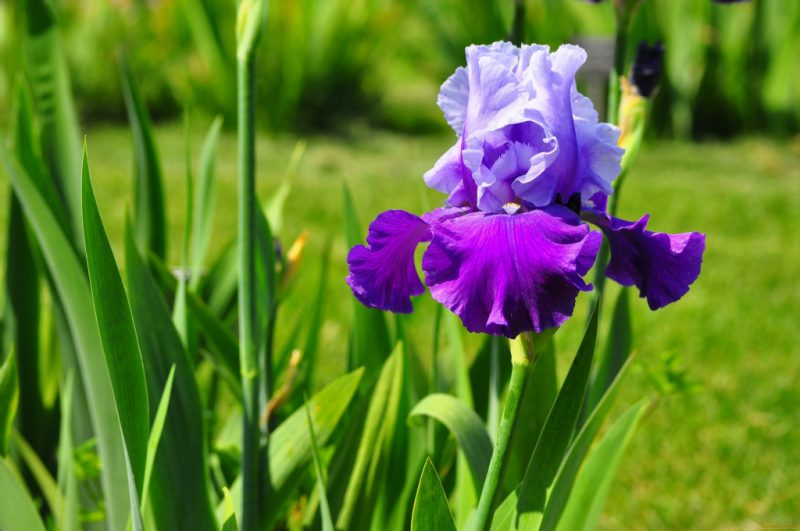
This is one of the most attractive perennials, which is easy to care for. Iris is watered in dry weather, flower stalks are cut. In one place, it grows for about ten years and looks advantageous in mix flower gardens. Iris is thermophilic and prefers places on which light falls. It is important to regularly water the plants.
The flower can be painted in blue, dark purple. There are many different varieties. Most popular Snow Queen, Imperial Opal.
Astilba

Eukaryote blooms with panicles and delights gardeners with its beauty from June to the end of summer. The color scheme is striking in variety. They grow white with a cream shade, pink, red and even lilac cultures. Their delicate aroma is similar to the fragrance of bird cherry.
The plant prefers the northern part of the area where there is a shadow. However, some varieties should be grown only in the sun. Astilbe loves the loamy layers of the earth, saturated with potassium and phosphorus.
Gladiolus
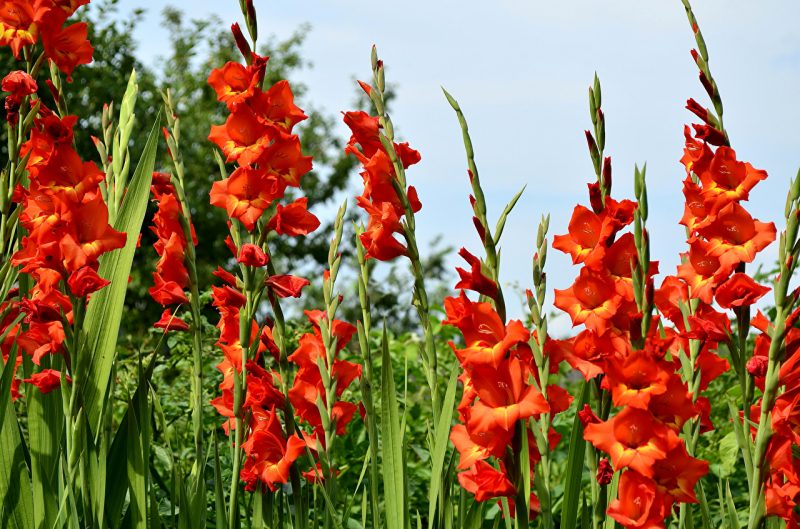
Everyone's favorite gladioli have flowers that look like pointed swords. The plant looks very organic thanks to the original and delicate colors, unexpected corrugation pattern. There are about 170 types of gladioli.
The plant responds well to soil with sand and clay, loves organic fertilizers. Colors require UV protection.
Gazania
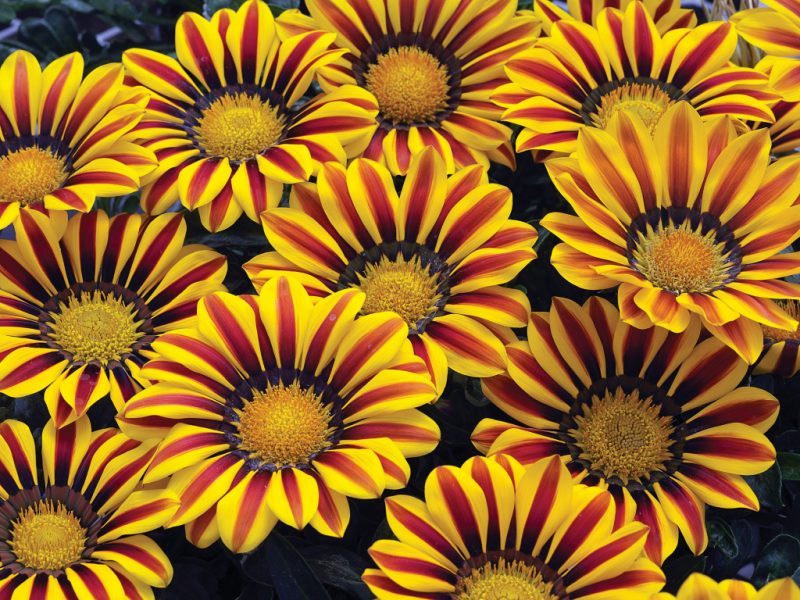
The plant blooms throughout the summer season and has an extensive palette of shades. Gazania leaves are dense and richly green. Their shape depends on the variety. The color scheme varies from orange to pink.
Gazania is often used in landscape compositions. For full growth, the sunny side and open territory are necessary. Inadmissible stagnation of water in the surface layer of land. Perennial loves moderate watering.
Alissum
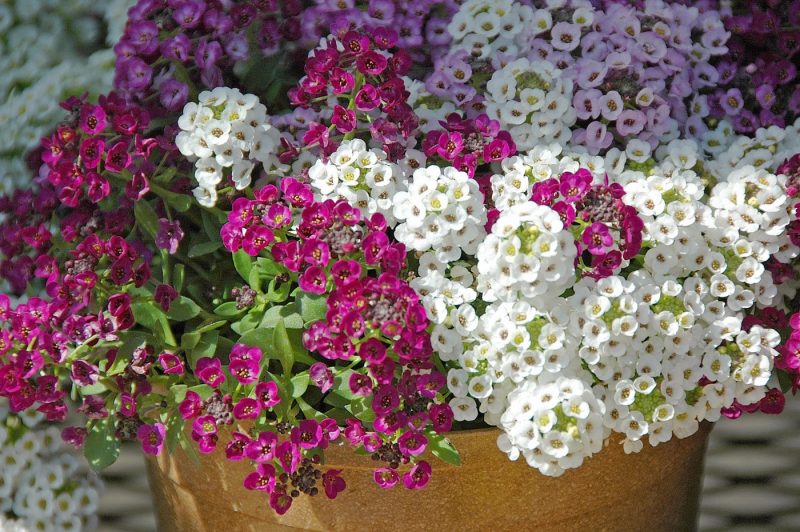
Alyssum is a low plant with shoots that carry small flowers. Its color varies depending on the variety. Perennials are often used to fill empty areas when spring bulbs have faded.
Popular varieties:
- Taini Tim (lush white reproductive organs);
- Violet Konigin (purple flowers);
- Easter Bonnet Deep Rose (deep pink color).
Flowers are very fond of sunlight and tolerate drought well. They are able to survive frosts to minus ten degrees.
Clematis

A worthy decoration of the garden will be clematis, which has many advantages:
- durability;
- endurance;
- resistance to winter;
- long flowering time.
Lowlands that are adjacent to gravity waters are not suitable for landing. Sand or loamy soil is selected.
Lupine
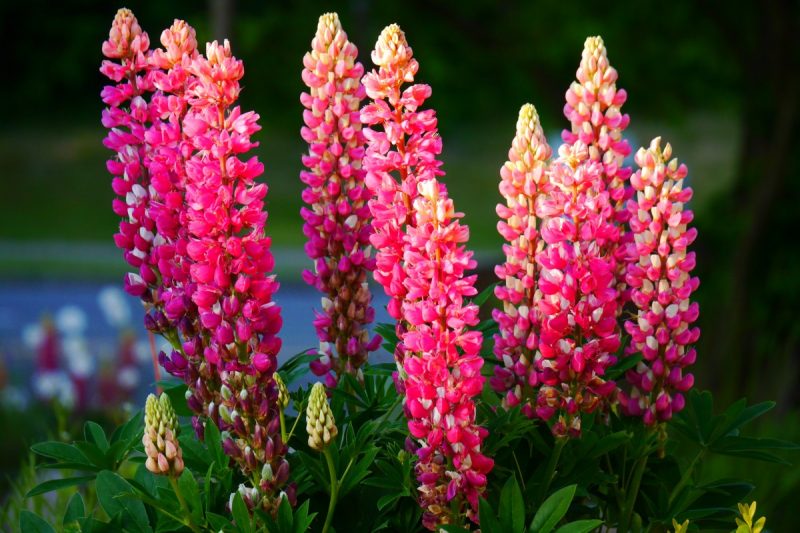
Depending on the variety, lupins grow in different heights. Sometimes they reach one meter. Their inflorescences are elongated. The color palette is extensive. There are white, purple, pink, yellow, blue specimens.
Landing and caring for lupins is a real pleasure. The culture is not too demanding on the composition of the earth, but it blooms better on fertile lands. What lupine looks like can be seen in the photo.
Yarrow

This creation of nature tolerates any surface layers of land well and does not require complicated maintenance. He prefers sunny areas and looks great both in individual landing and in combination with other eukaryotes. Seeds for seedlings are planted in late February.
Some summer residents successfully grow yarrow in the shade. It’s not difficult to do this.
Phlox paniculata
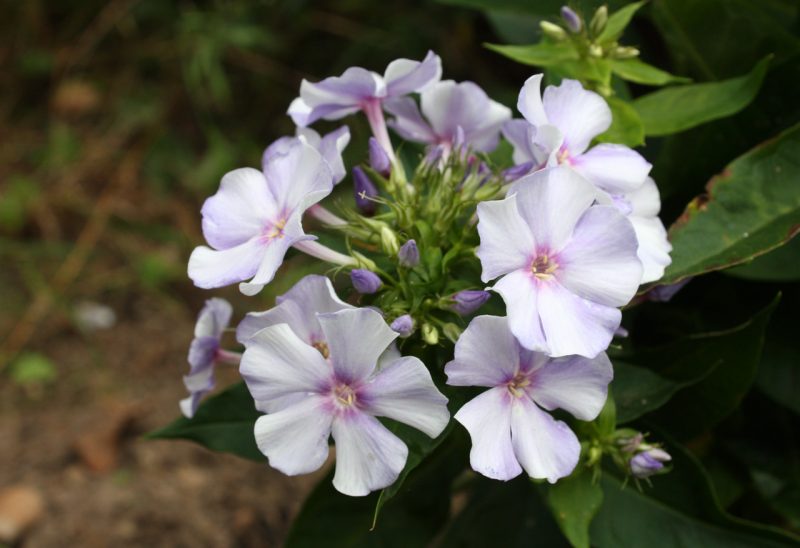
It is a bright and tall flower with a fragrant smell. Coloring is both snow-white and black-purple. The palette is missing only a yellow tint. In the form of inflorescences are round, cylindrical, pyramidal and flat-umbellate.
The rich flowering of phlox can be obtained only when the soil under them is well moistened. It is important to loosen and mulch it after watering.
Hosta
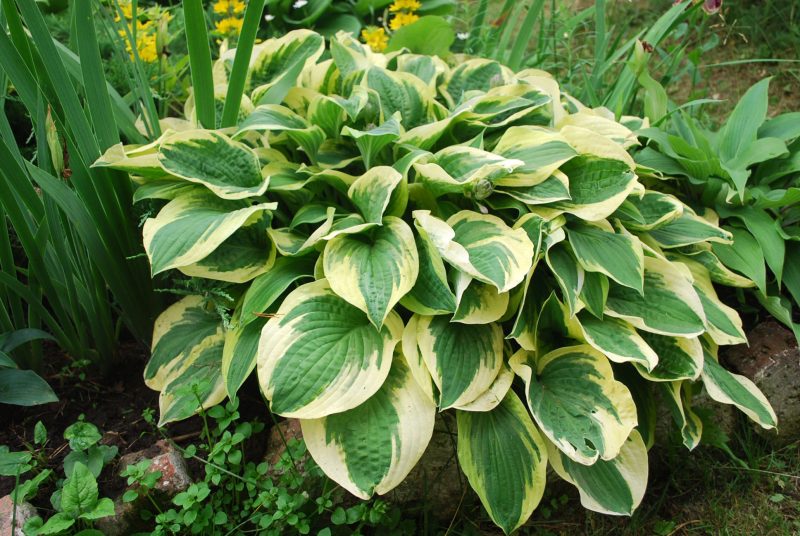
Hosta has massive leaves of various colors. Its stems can reach 1.25 m. The plant is resistant to cold weather and develops well even in a dark place. The hosta is suitable for cultivation by inexperienced gardeners.
Landscape designers use it to fill the space and create a green background. The garden flower also looks beneficial in mixed borders. It goes well with cereals, ferns, decorative foliage.
Perennial autumn flowers for summer residence
Colchicum
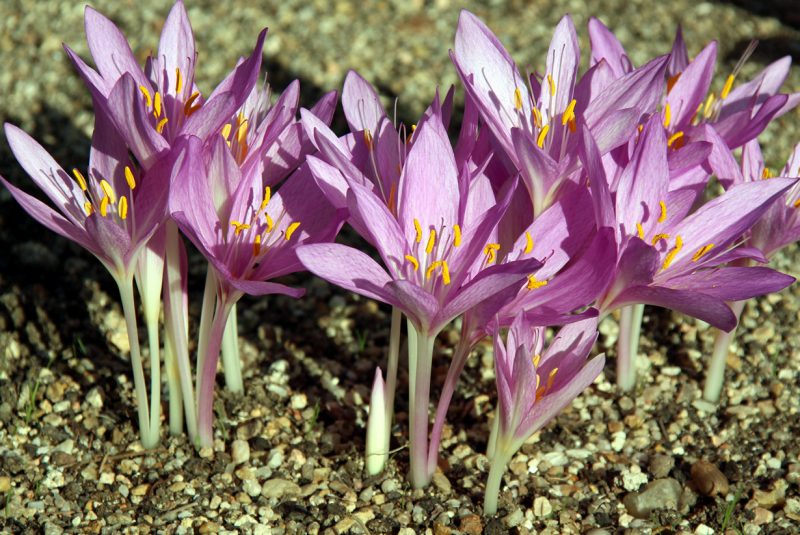
Outwardly, it is similar to crocus, but has larger flowers with a pleasant aroma. The period from blooming to withering of the primordia is about three weeks. The flowers have a funnel shape and are about twenty centimeters long. It must be borne in mind that this plant is poisonous.
Colchicum unpretentious regarding land and rules of care. Growth conditions are independent of the presence of sun or shadow. Culture is planted on landscape compositions with constant flowering.
Chrysanthemum
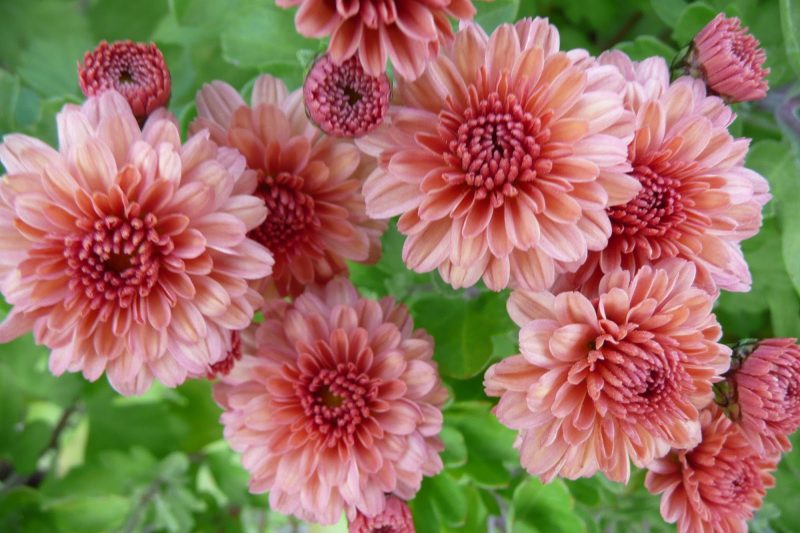
This is a perennial with basket-shaped flowers belonging to the Astrov family. Differs in height of bushes, large sizes. Korean and alpine chrysanthemums are especially popular. Not all species adapt to the harsh climate. Beautiful varieties with large flowers can be grown only in the south.
Read also:potted chrysanthemum - home care
The bush of the plant requires renewal once every three years. A place for growing is chosen well-lit. Even a small shadow negatively affects flowering.
Crocosmia
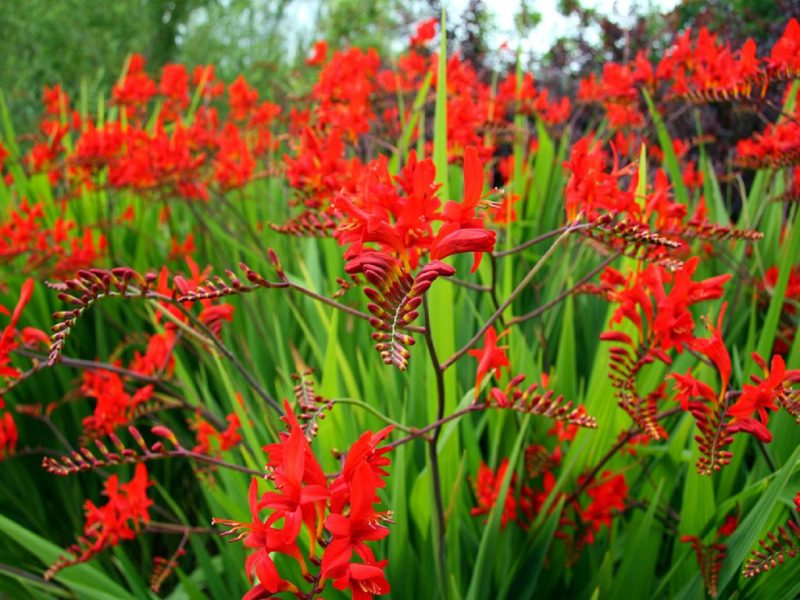
It is a bulbous African plant. This is a relative of the iris, which blooms almost to the end with bright orange buds. The bush looks elegant and decorative.
Crocosmia reaches a height of up to 70 centimeters. It grows well in width. It grows where there is no water stagnation.
In the catalog of perennials there are other cultures that are popular with owners of private houses:
- freesia;
- haberlea;
- Hazmant;
- hop;
- chastuha;
- primrose;
- sage;
- cyclamen;
- mother of thousands;
- chastuha;
- evening primrose;
- tarragon;
- yucca;
- clover
- buttercup;
- day-lily;
- hellebore;
- goldenrod;
- Iberis.
It is interesting: hellebore: planting and care
Perennials look excellent throughout the season and save on dividing plants into several parts during transplantation.
List of annual garden flowers with names and photos
Annual flowers delight others with a variety of colors and shapes. With their help, the garden will turn into a real work of art. They help change the design of the site from year to year.
Annuals blooming in spring
Begonia.

This is a perennial that is grown as an annual.
Calendula.
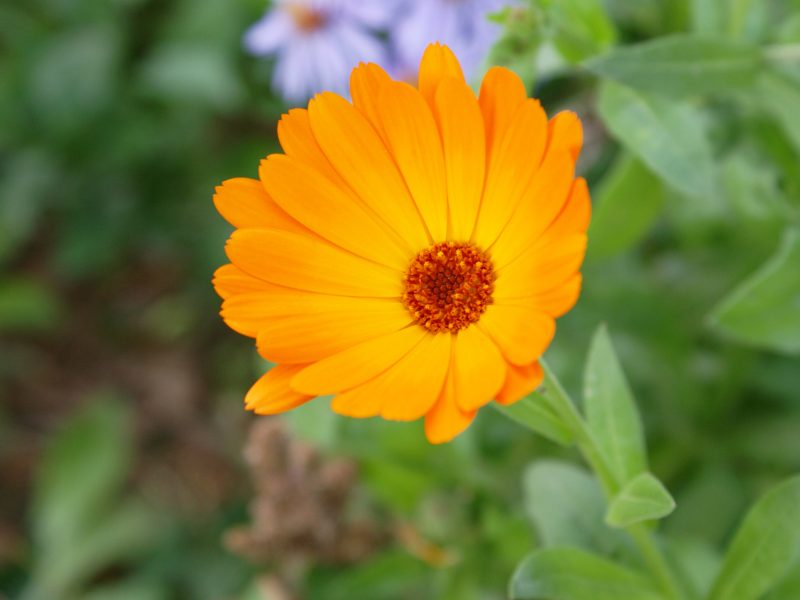
It stands out in the garden thanks to the yellow and orange modified shoots. It blooms from early spring to frost.
Mimulus.
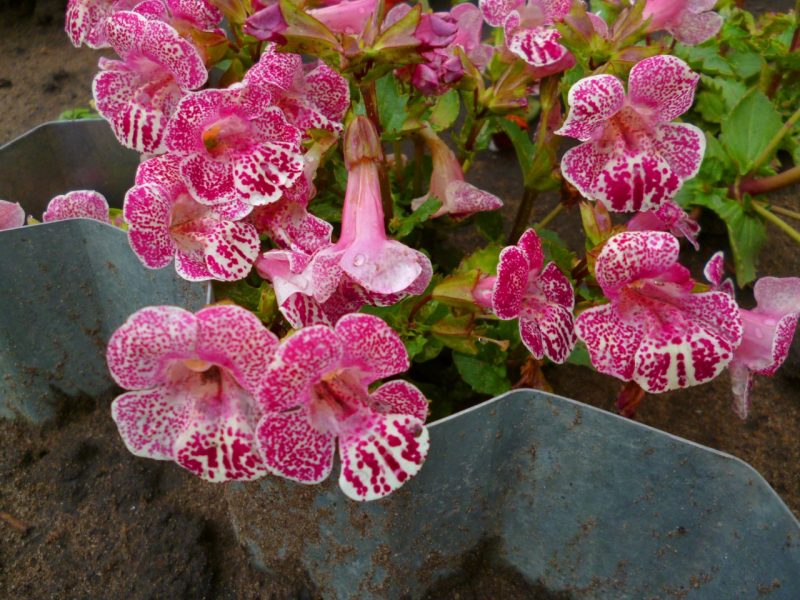
It grows in shaded areas in moist soil.
Sweet tobacco.
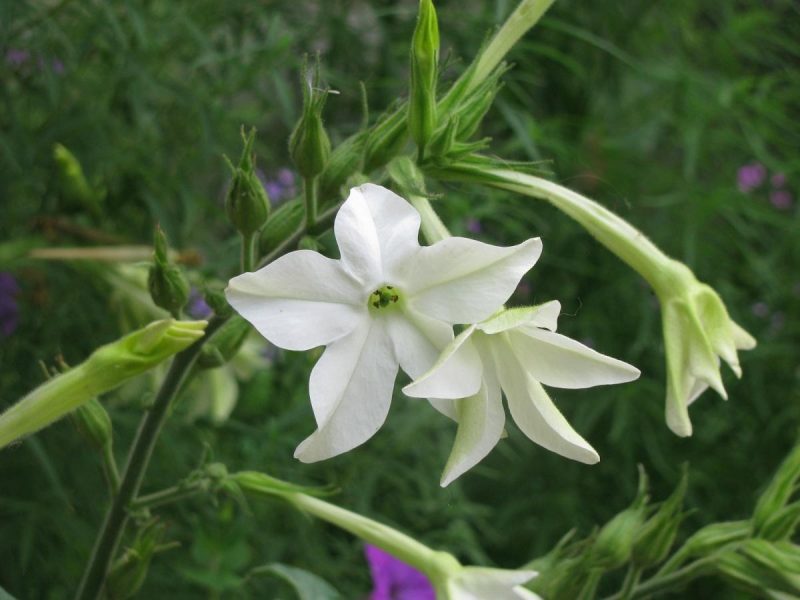
Its flowers are not too noticeable, but the smell is simply amazing.
What plants bloom all summer
Mirabilis.

Blossoms its flowers at night and has a different color. It tolerates drought.
Salpiglossis.
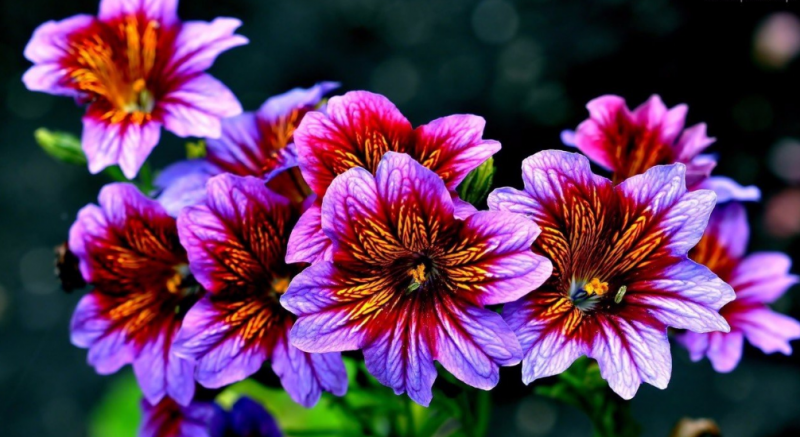
Annuals stand out for their exotic appearance.
Ursinia
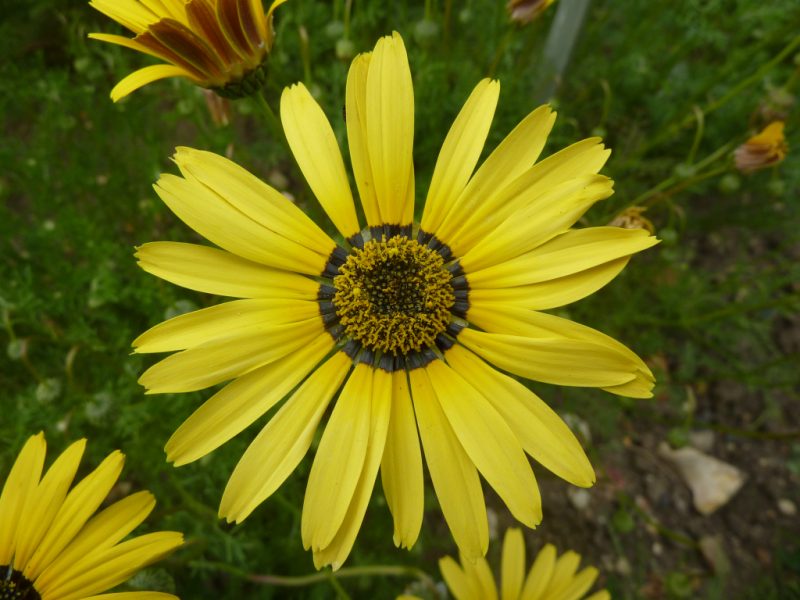
He loves warmth and sun.
Static.
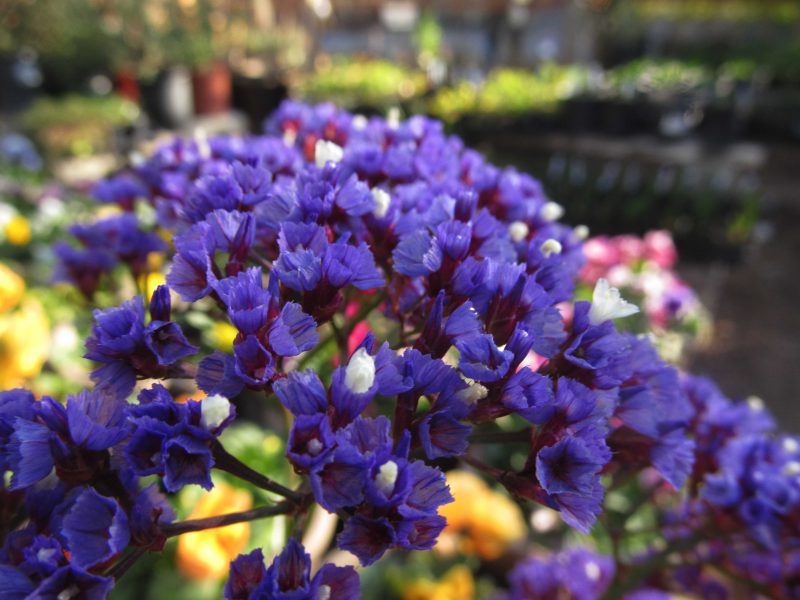
Looks great on flowerbeds thanks to bright colors.
Amaranth.
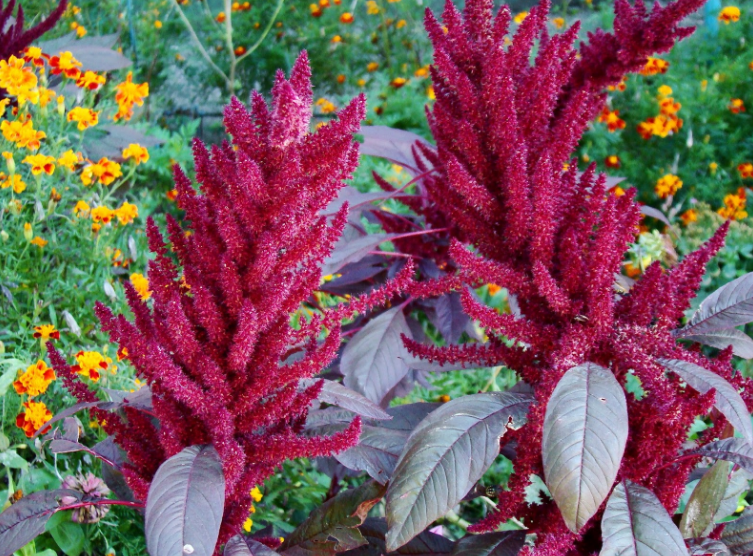
High annual looks spectacular and elegant. It has all the colors.
Marigold.
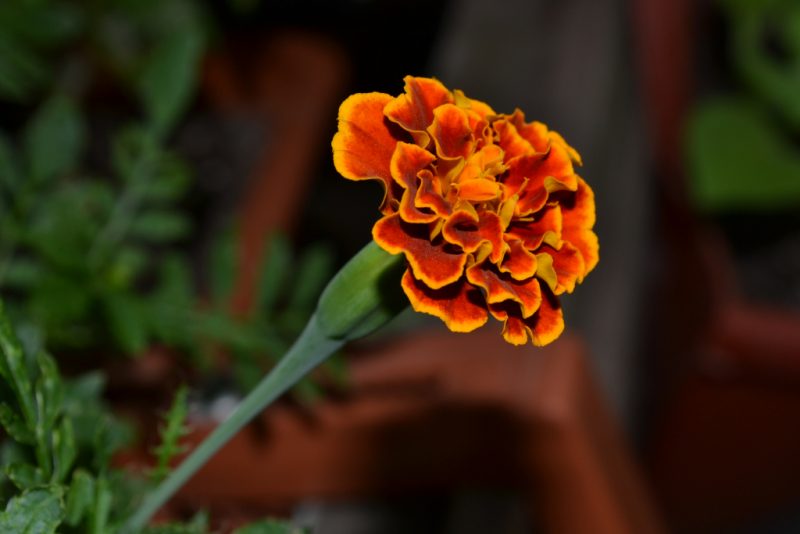
A popular eukaryote common among fans of annuals. Marigolds are grown through seeds and seedlings.
Datura.
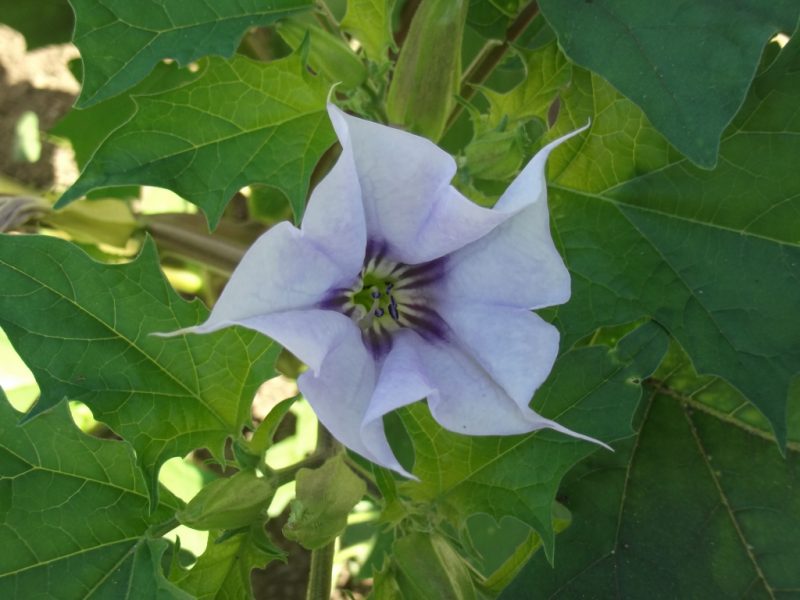
It grows almost a meter high.Blooms with buds in the form of blue, white or yellow bells.
Zinnia.
![]()
It does not grow in the shade, it blooms from the beginning of the summer season to cold weather.
Cosmea.
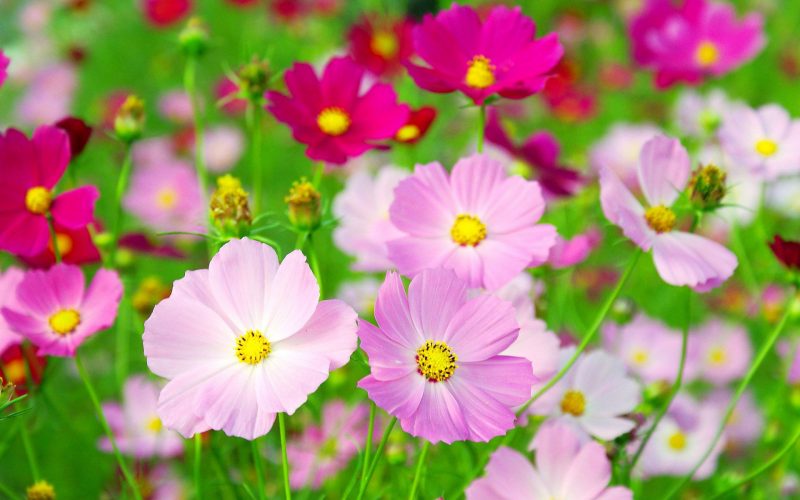
Has all shades of pink, white and blue. Due to openwork leaves, it resembles dill with bright flowers.
Phlox is annual.
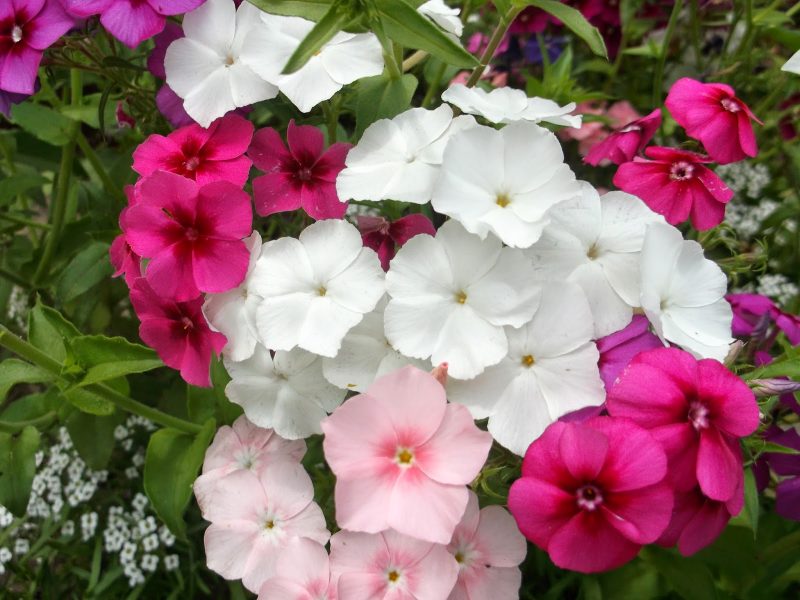
It blooms in late June and pleases with a variety of shades.
Dahlia.
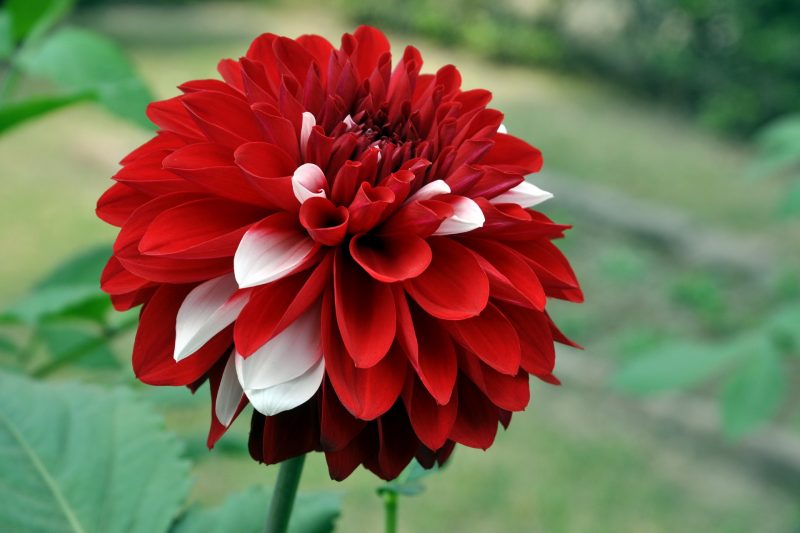
Flowers look elegant and pleasing to the eye all summer.
Lenok.
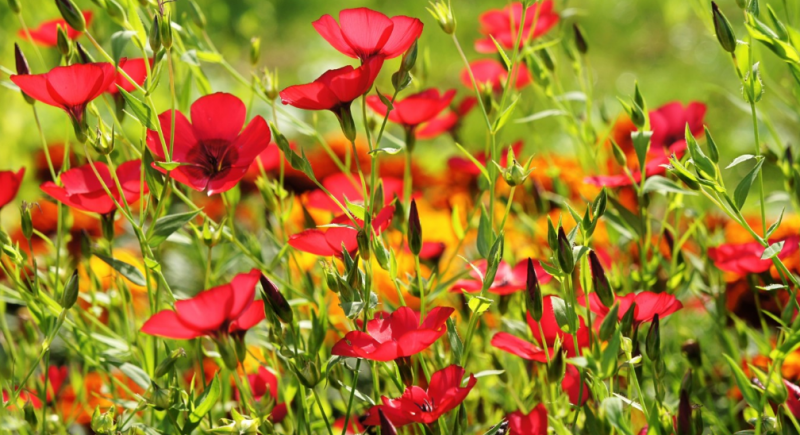
The plant has thin twigs, bright miniature inflorescences of raspberry shade.
Salvia
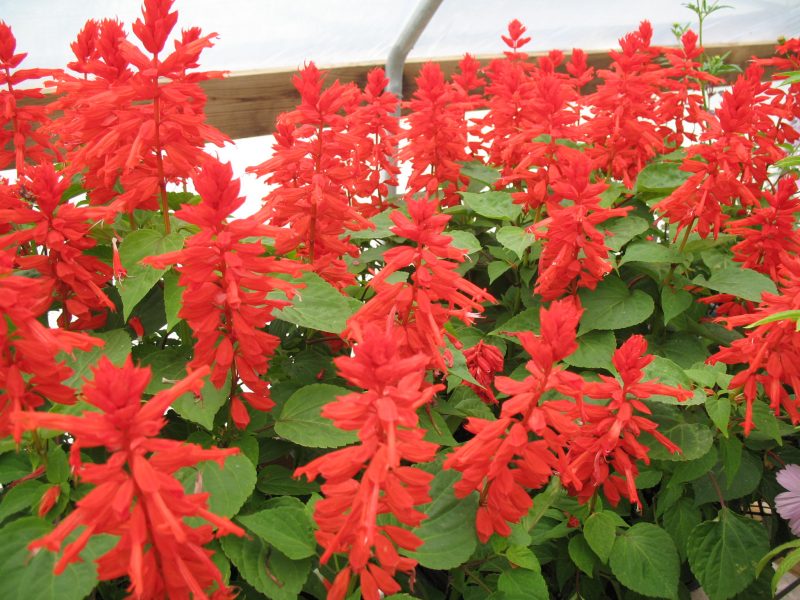
It is unpretentious and combines well with other plants.
Gaylardia.
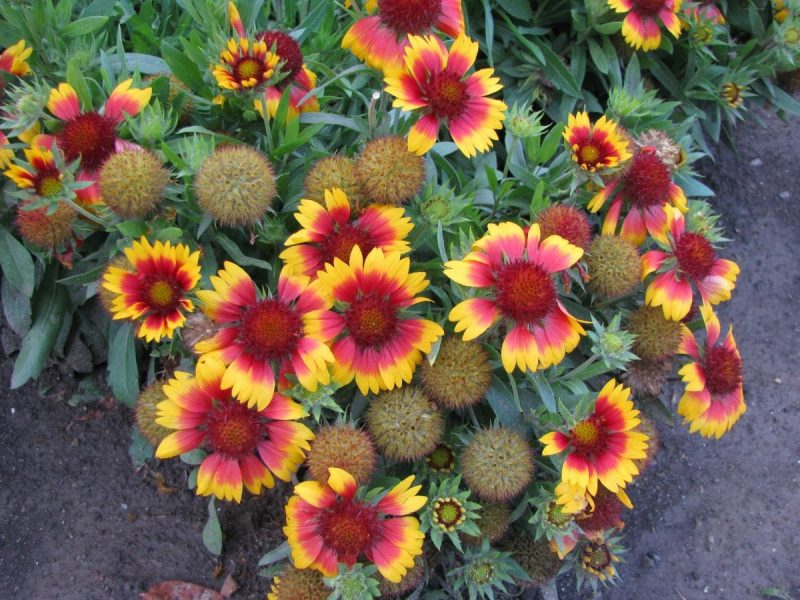
It blooms for more than four months, if periodically cut off dried inflorescences.
Nasturtium.

It has many varieties, terry varieties are especially popular.
Balsam.
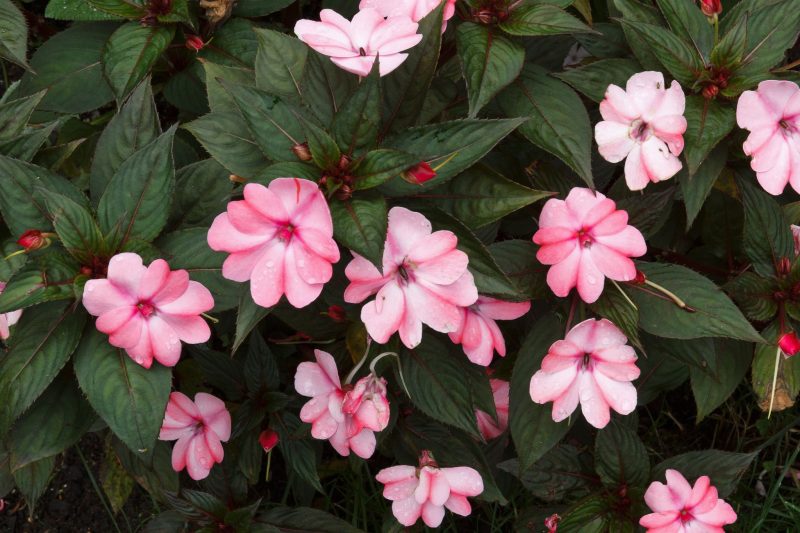
Tall plant with double or semi-double flowers of large sizes.
Snow-white Iberis.
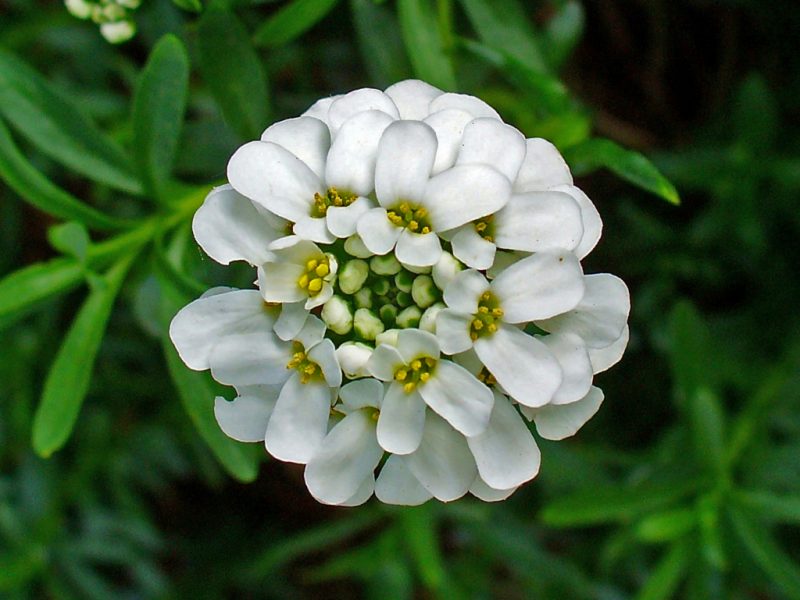
A sun-loving plant that grows well in the shade.
Verbena.
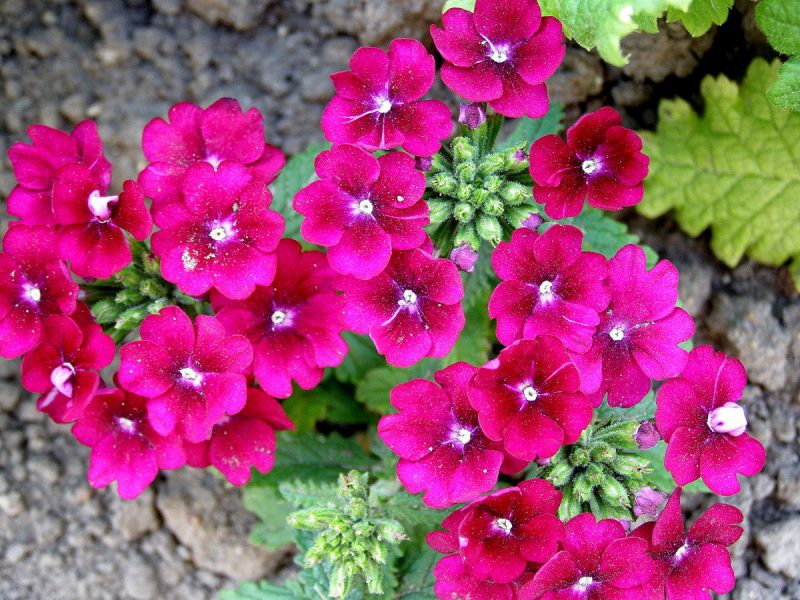
Fragrant and attractive flowers reminiscent of primrose.
Dimorph library.

A short flower that grows even on rocky soil.
Purslane.

A heat-loving annual that blooms even on poor soils.
Mallow.
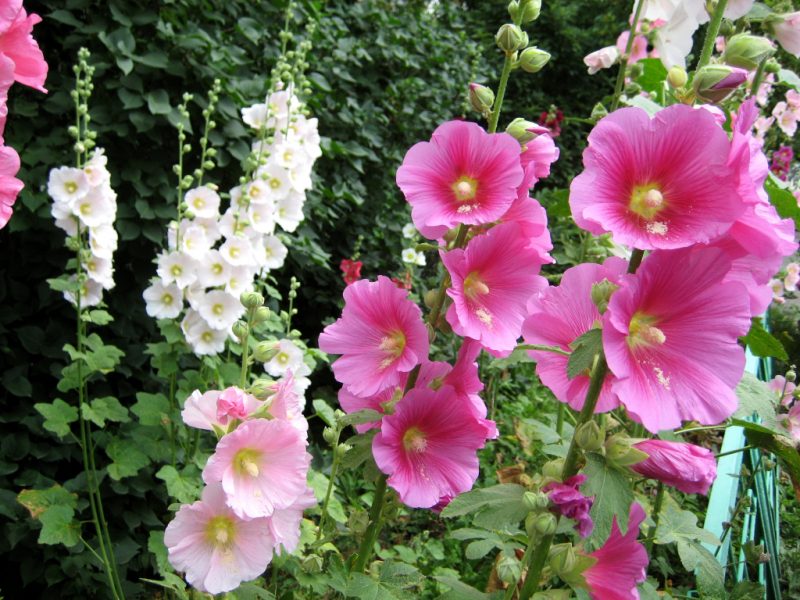
It is noticeable due to its size and bright mutated shoots.
Mignonette.
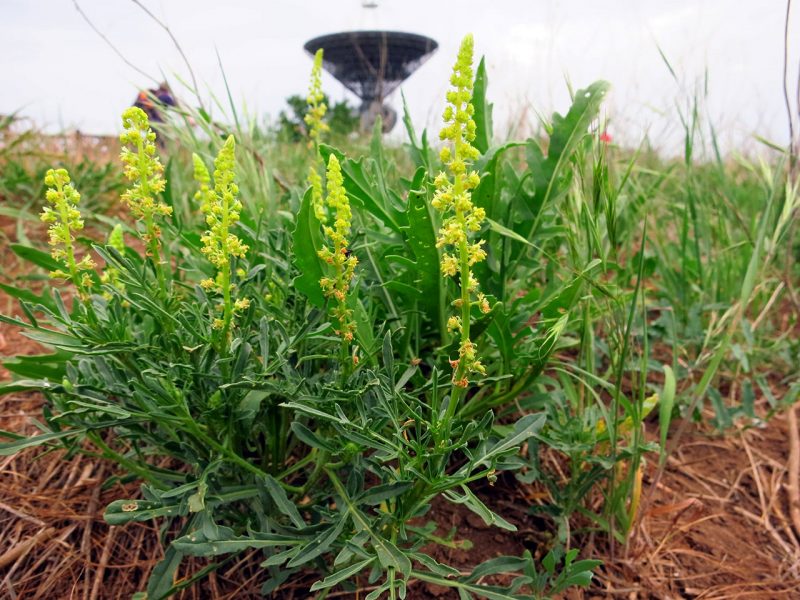
It has a strong aroma.
Night violet.
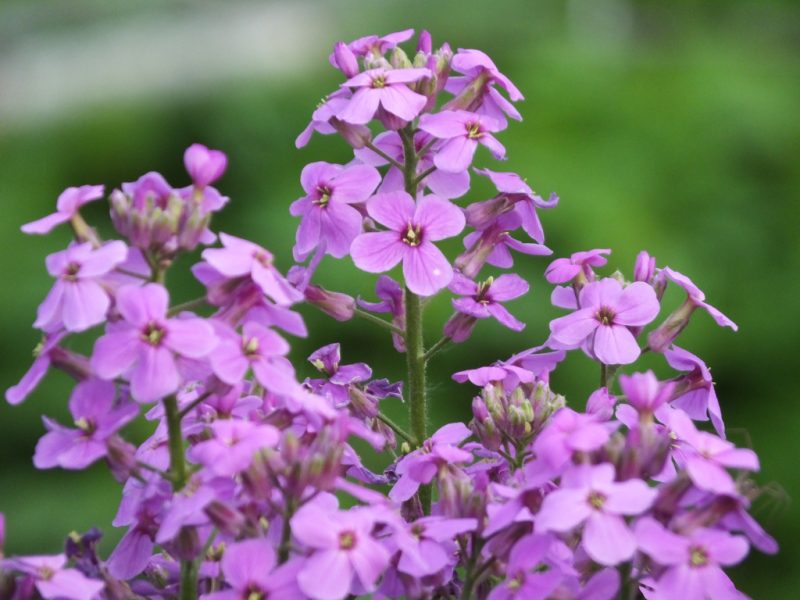
It smells great at night.
Bell.

A short look with flowers of light blue, purple hues.
Autumn annual flowers for a summer residence
Cleoma.
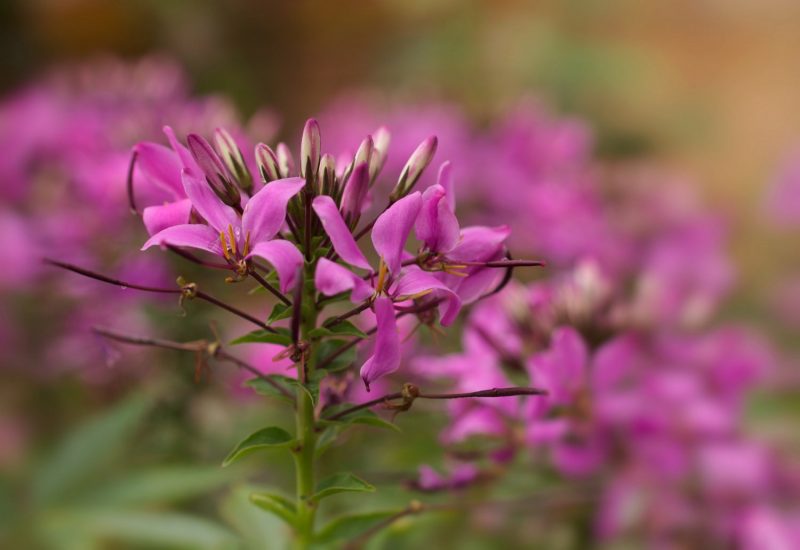
Pleases with a variety of shades and a fragrant smell from mid-summer to October.
Aster.
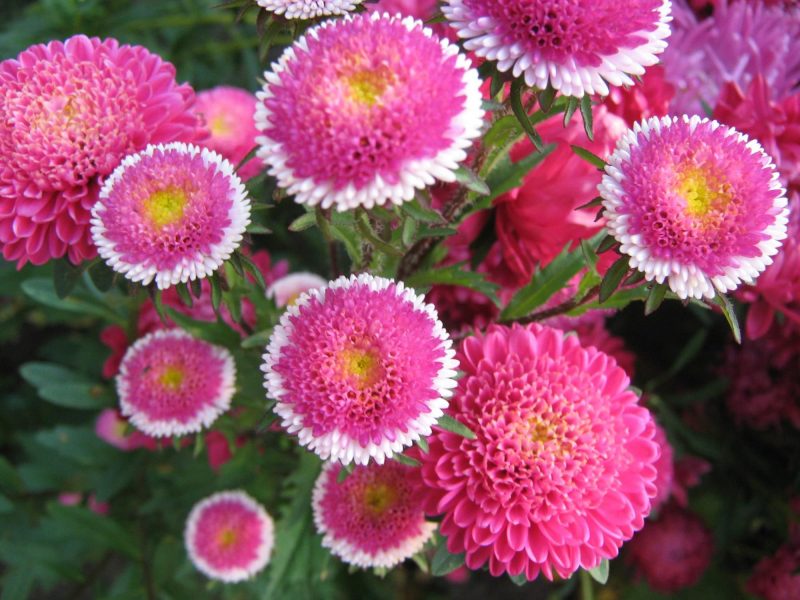
Unpretentious flowers, which are famous for cold resistance.
Dahlia.

Varies in shape and color depending on the variety.
Ageratum.
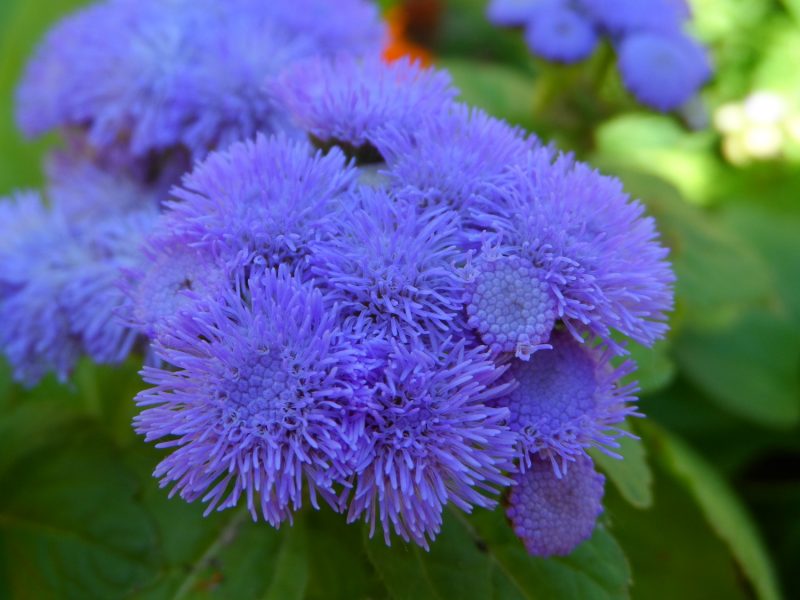
Has fluffy inflorescences of a blue-blue shade.
Snapdragon.
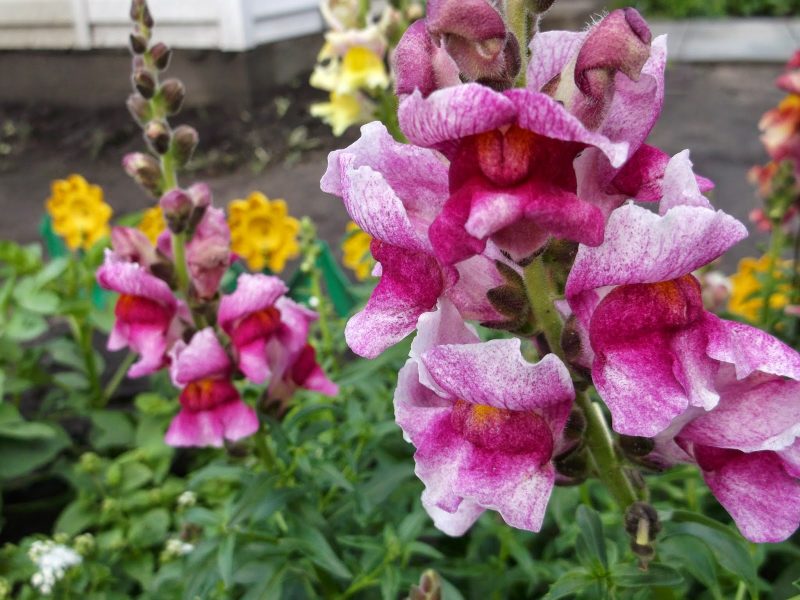
It is planted along the curbs or on a green lawn.
Petunia.
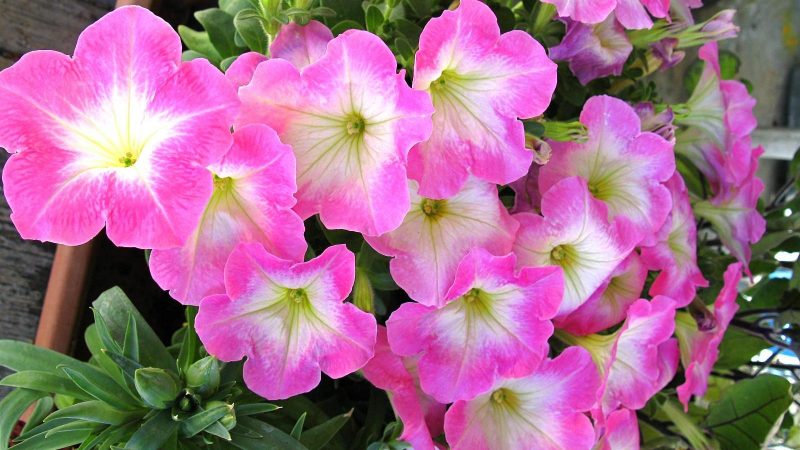
It quickly gains strength and blooms after planting. This is the plant with the most extensive color palette, which blooms all summer and autumn.
Calceolaria.
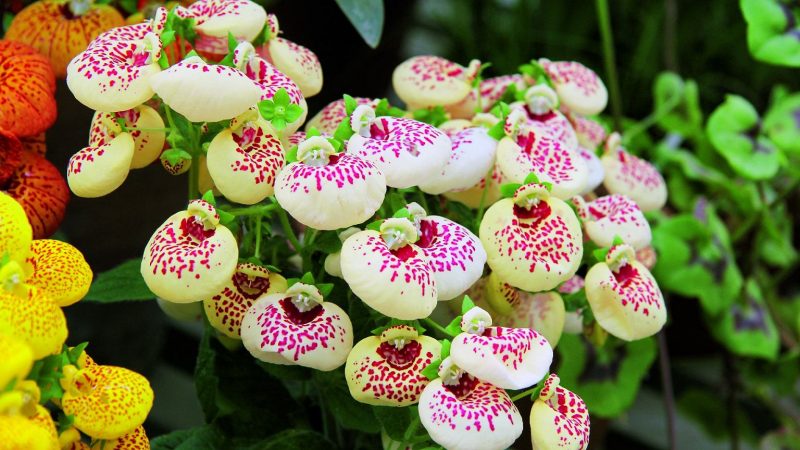
It has an intricate shape and bright color.
The variety of annual flowers for the garden allows you to make beautiful compositions both in vast and in small areas. Most of these plants have similar growing conditions.
Bulbous flowers for the garden
Plants grown from bulbs delight gardeners from the first spring months. They are easy to plant. They are excellent for flower beds and alpine slides. The following perennial plants are the most popular bulbous flowers for the garden:
Snowdrop.
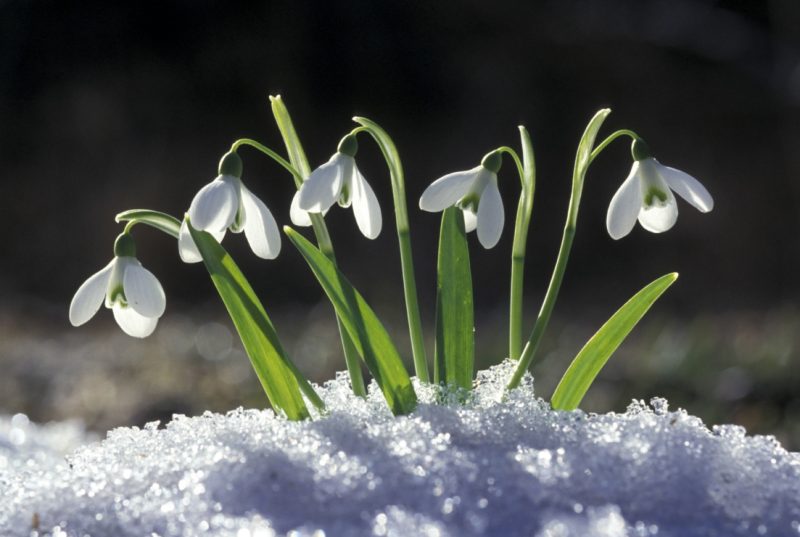
The length of the growing season depends on weather conditions.
Sparaxis.
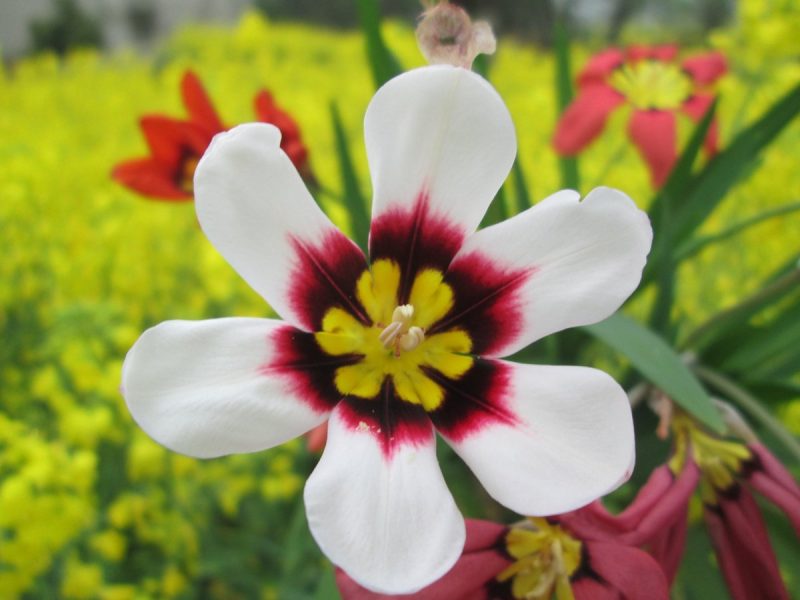
The flower is planted in a well-lit place, protected from the wind.
Tigridia.
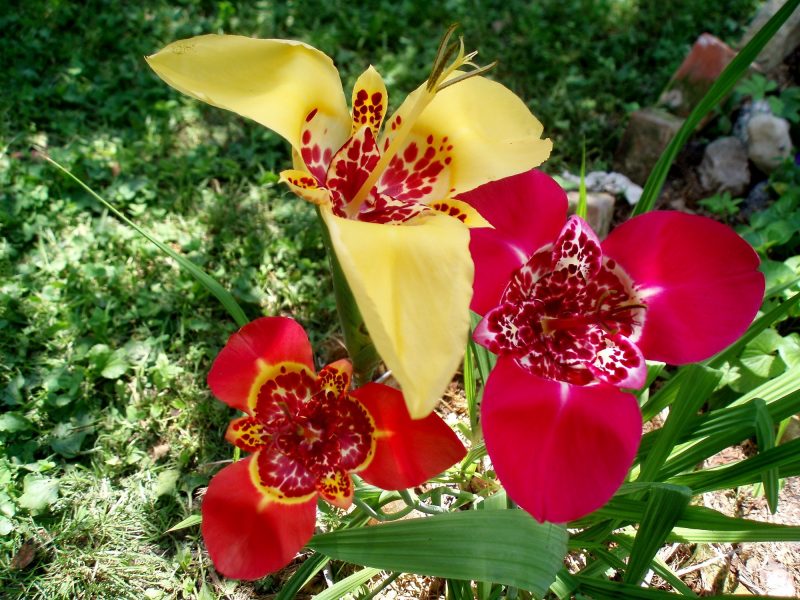
Planting material reacts negatively to frost, so it is important to wait for warm weather.
Ixia.

Children are separated from the bulbs and the faults are treated with crushed coal, only then they are planted in the ground.
Hionodox.
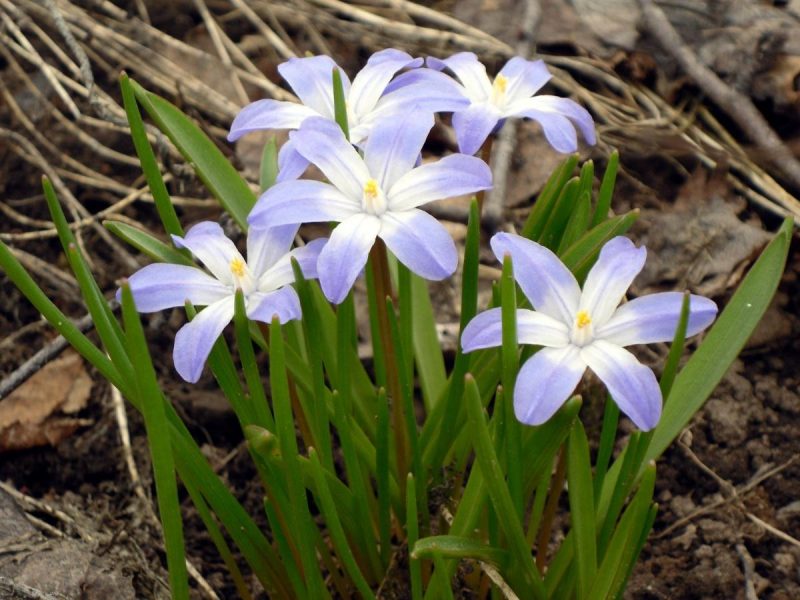
It has large modified shoots of a sky-blue hue.
Acidantera.
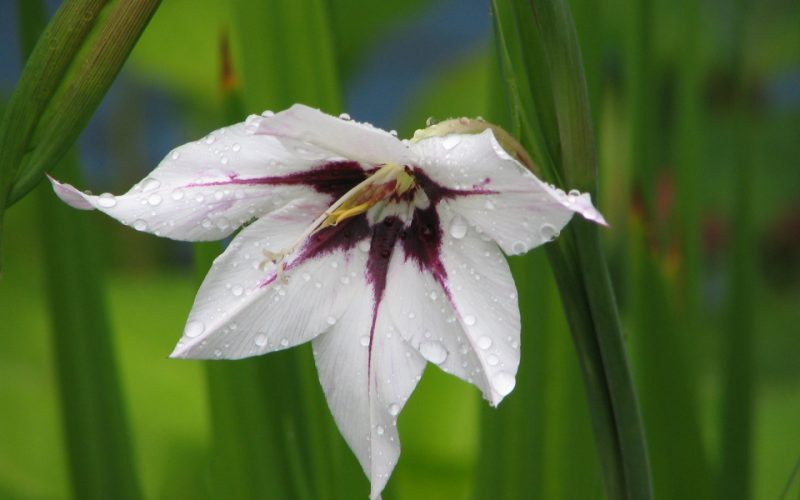
Corms are white and reach 30 millimeters across.
Galtonia.

Bulb planting is carried out in the spring, when the soil has warmed up.
Grouse.
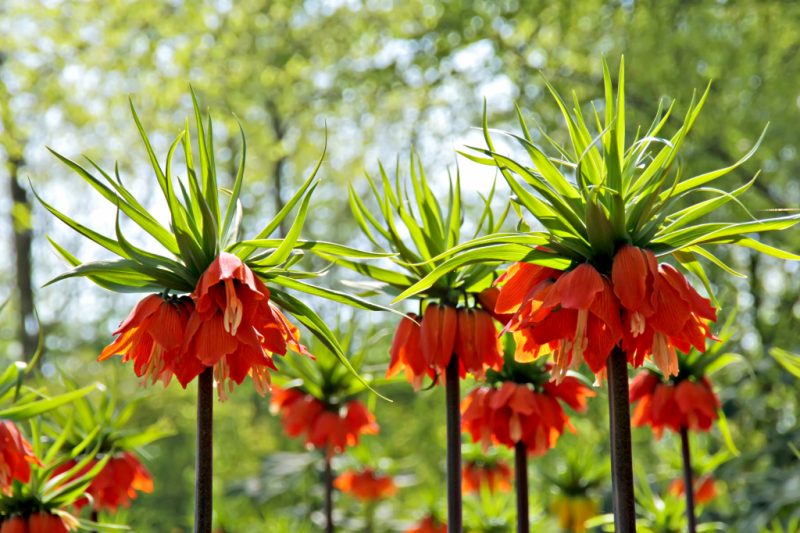
The variety is selected based on the region of cultivation.
Poultry farmer.

A herbaceous perennial that is grown from bulbs or seeds.
Tulip.
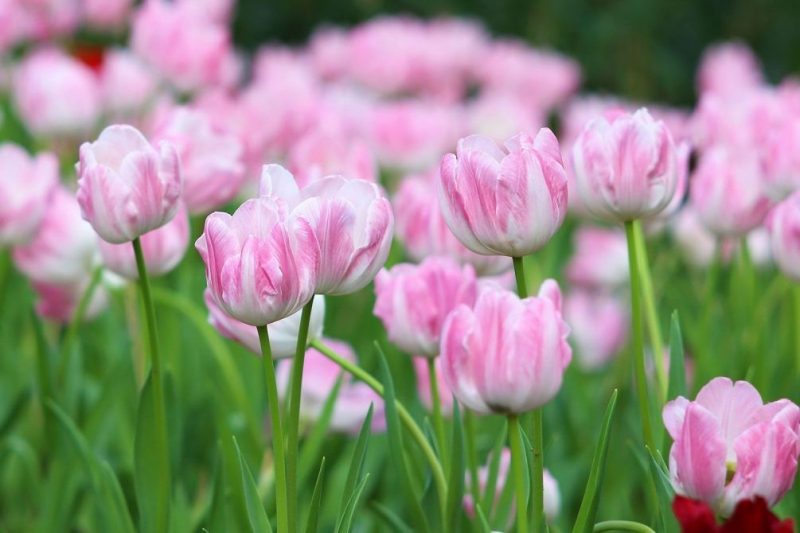
Bulb size, color and shape of flakes depend on species.
Narcissus.

It is grown on neutral loamy soil. Planting stock is disinfected with a potassium permanganate solution.
Lilies
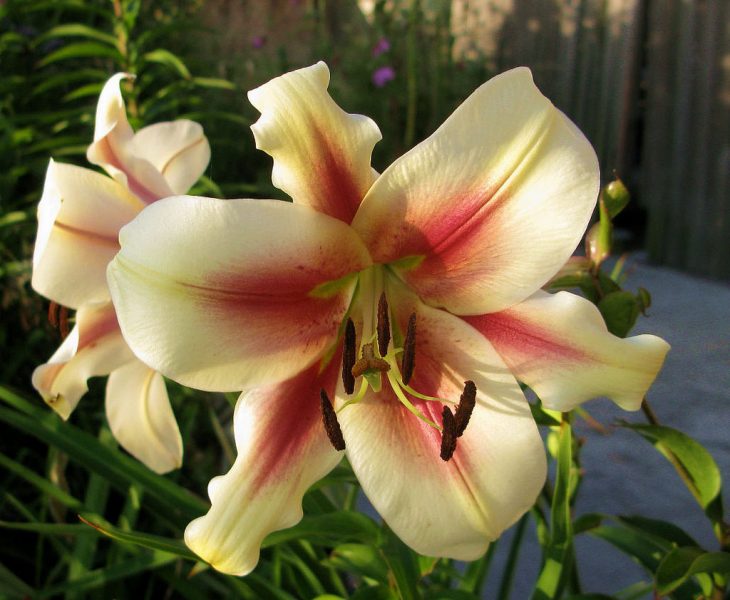
They have large bulbs with a diameter of up to twenty centimeters.
Freesia.
![]()
Bulbs are dug up for the winter. A flower loves a light shadow.
Crocus.

Loves the sun and partial shade. It is not necessary to dig out annually.
Muscari.

It is a miniature fragile flower that prefers sunny places.
Pushkinia.

It grows well in flower beds and borders, on lawns.
It is important to choose a quality planting material. Bulbs should be the same size, without rot and plaque.Low crops are planted in the foreground, bulbous flowers for the garden, which are longer in height, are in the background.
Shady garden flowers
For areas under trees and tall bushes, specimens that grow well in the shade are suitable. They do not bloom too profusely, like their sun-loving counterparts. However, in no way inferior in beauty. Gardeners prefer to choose the following shade-loving flowers:
Aquilegia.
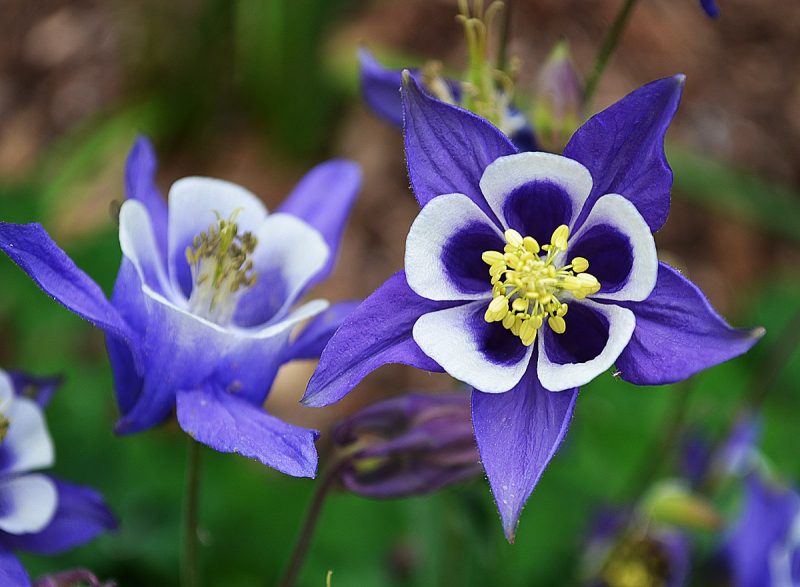
Unpretentious look with original flowers of various shades and openwork leaves. The culture is not picky about the choice of land, grows well on moist soils.
Garden geranium.

The flower grows rapidly and well fills the free territory. Geranium is popular for its longevity and resistance to pathogenic microorganisms.
The center.
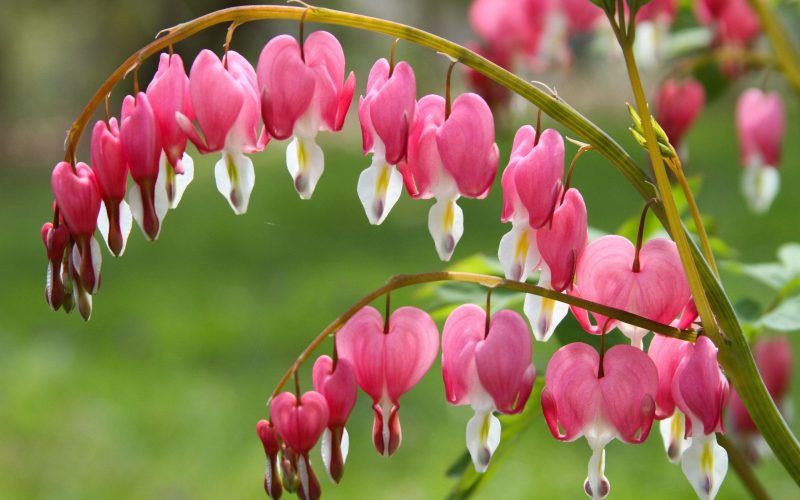
A moisture-loving plant that forms a powerful bush. Summer residents provide shelter for the winter. Dicenter propagated by cuttings or dividing bushes.
Volzhanka.
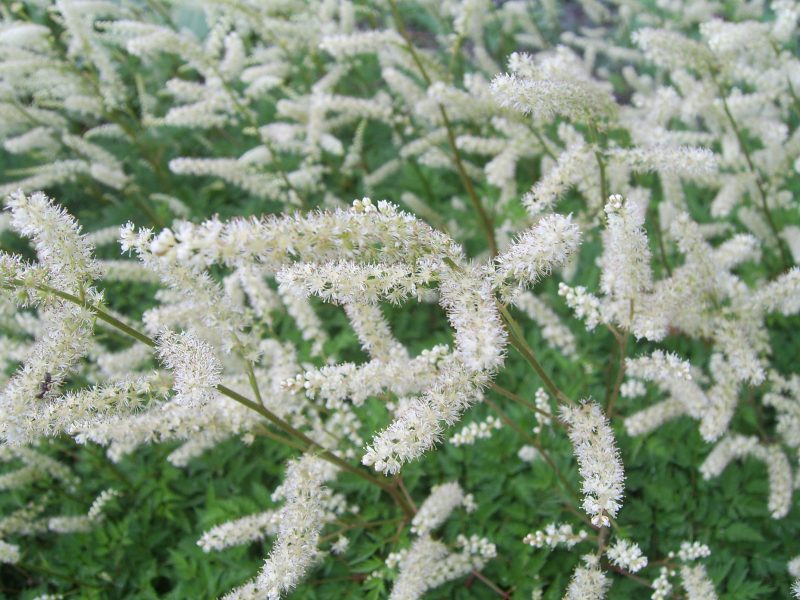
A tall plant with white panicles that have a honey scent. Volzhanka has corrugated foliage, which persists until frost.
Hydrangea.
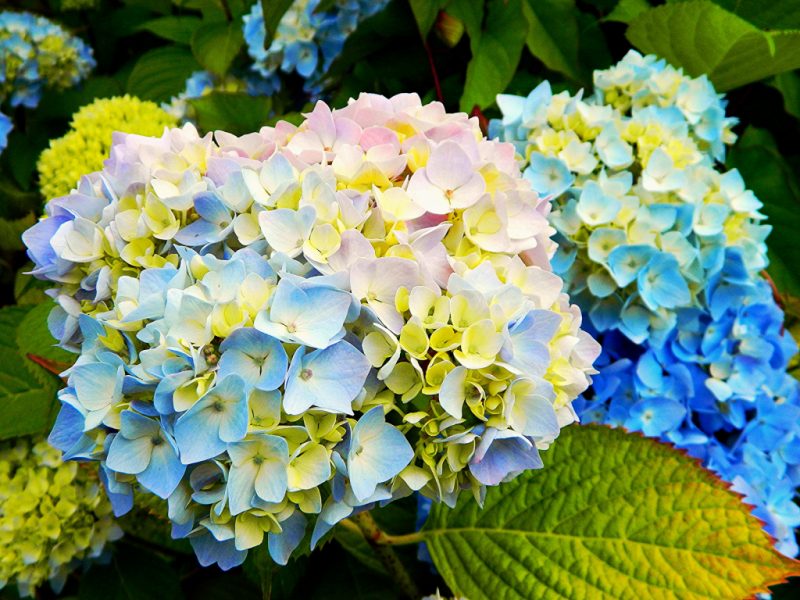
He likes nutritious and well-moistened earth. The plant is rarely affected by disease.
Geicher.
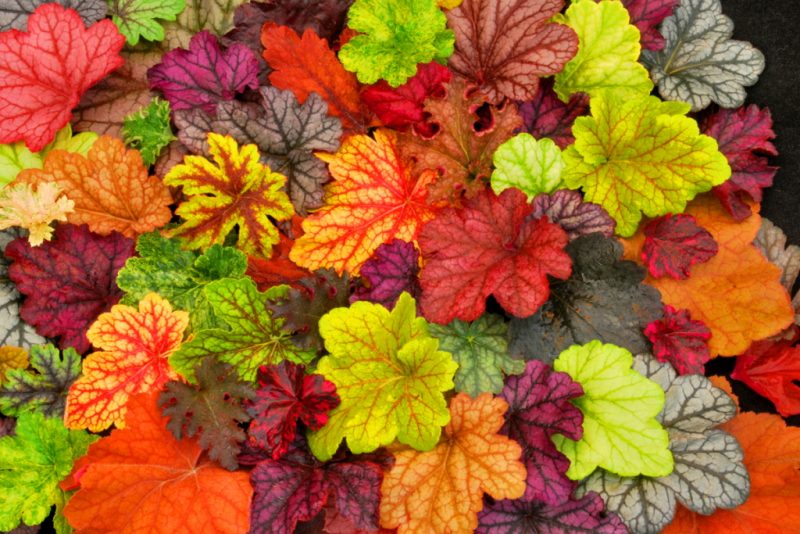
An unpretentious plant that brings a bright accent to the flower beds. The color scheme is quite extensive. Original look lilac flowers with a steel sheen. Variegated foliage pleases others with its beauty from spring to autumn.
Hosta
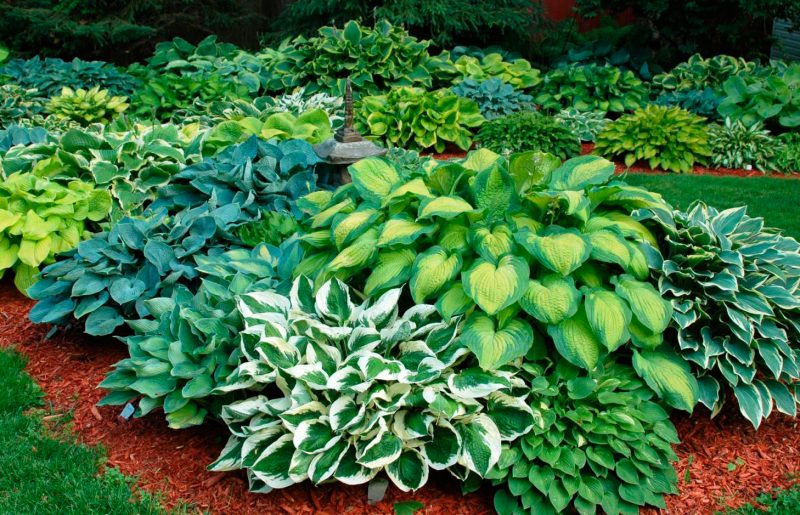
She is called the queen of the shadow. In places where the sun does not fall, the plant unfolds in all its glory. In the sun the host fades.
Astilba.

An unpretentious plant that loves moisture, which has red, whitish, pink inflorescences.
Fern.

Loves moisture and shady areas. Gives the flower garden a rainforest look.
Buzulnik.
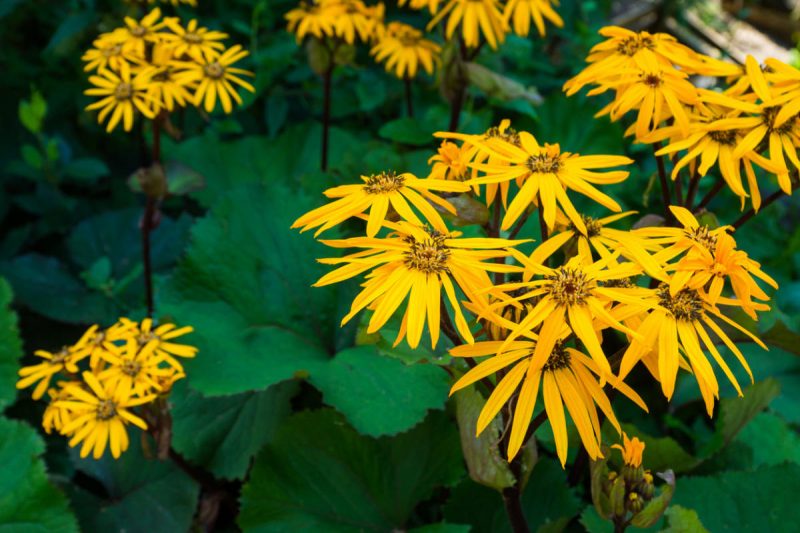
It has irresistible yellow inflorescences and dark green leaves.
Badan.

Perfectly suitable for planting in the shade, in winter it goes green.
Brunner.

Indispensable for decorating shady areas of a small area. It blooms with small blue forget-me-nots.
Purchased.
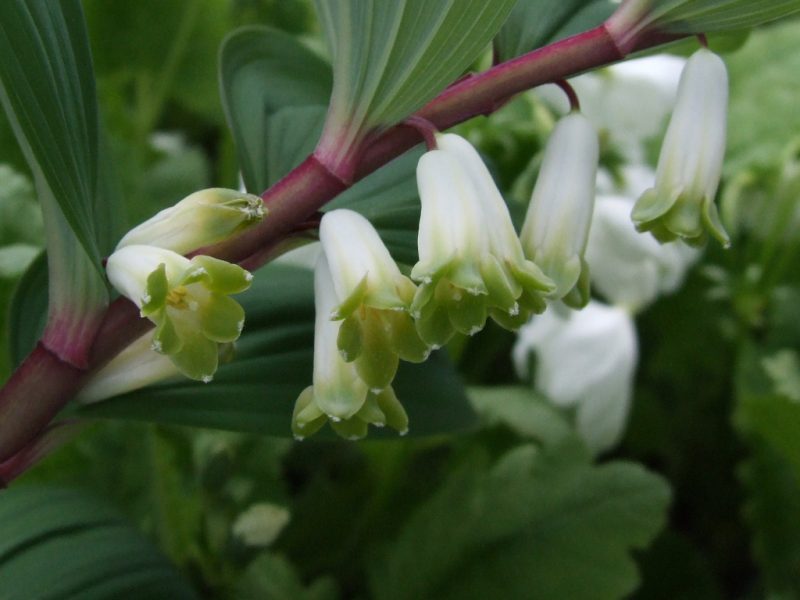
Perfect for the shady side and looks like a lily of the valley.
Other flowers love the shadow:
- cosmea;
- nasturtium;
- forget-me-not;
- marigold;
- violet tricolor;
- Rogers
- fuchsias;
- balsam.
The buds of these plants feel comfortable in all weather conditions. When planting, it is worth planting shade-tolerant perennials and annuals nearby.
The most unpretentious plants for the garden
Among the huge selection of plants that do not take a lot of time to care, it is difficult to choose the most beautiful garden flowers.
![]()
The most unpretentious include the following types:
- petunias;
- marigold;
- nasturtium;
- iridodictium;
- Muscari
- periwinkle;
- brunner;
- cornflower perennial;
- geranium;
- loosestrife;
- a swimsuit;
- meadowsweet;
- lupine;
- small petals;
- evening primrose;
- Turkish clove;
- calendula.
Particular attention should be paid to asters. These are annual garden flowers with a varied color. They delight gardeners every season with their colorful colors. Caring for aster does not cause difficulties. The flower is not afraid of cold weather, and perennial species can bloom at a temperature of minus seven degrees. Seeds germinate easily in any weather. A large selection of varieties with a variety of shapes and colors allows you to create a bright palette of shades on the site.
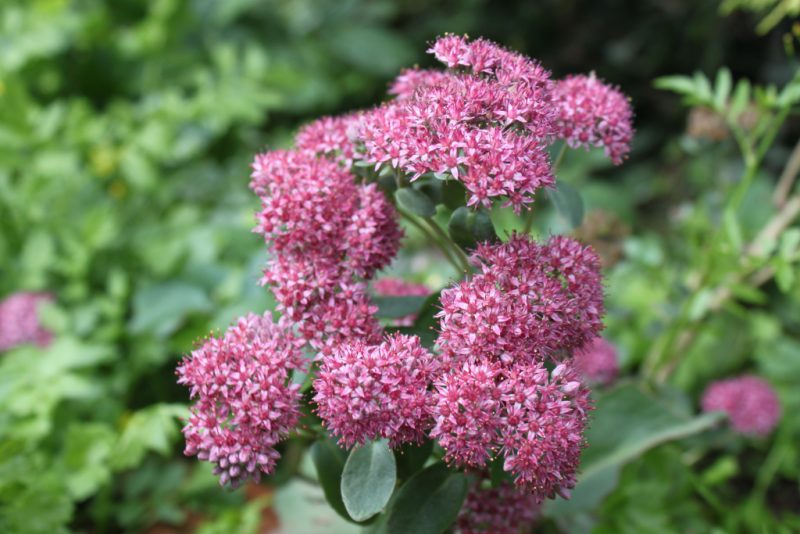
Even an inexperienced gardener can grow cleanings (sedum). This is a bushy plant with bright pink flowers in the form of umbrellas. It is often grown for decoration in Japanese or Chinese style. Cleaning is easy to care for. They feel good on any earth. It is enough to add a little organic fertilizer. In the middle lane, the most hardy are caustic, bent, white and false sedum.
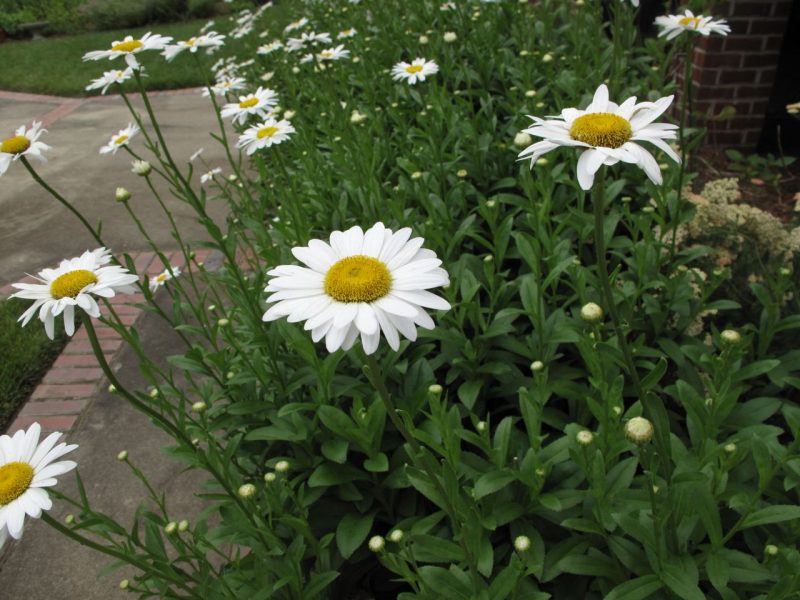
You can not ignore the garden daisy. It does not require much care and blooms for a long time. At the end of the first autumn month, the plant multiplies by rhizomes. Pyrethrum, which has modified shoots of bright colors, has similar properties.

It is worth planting salvia in the garden if there is a lot of sun and enough moisture on the site. The plant is not demanding on any other factors. Perennial is sown in the fall, before frost.

Marigolds are striking in their diversity and abundant flowering. They grow well in arid conditions and are not picky about the composition of the soil. The most popular varieties are Vanilla, Kilimanjaro, Antigua.
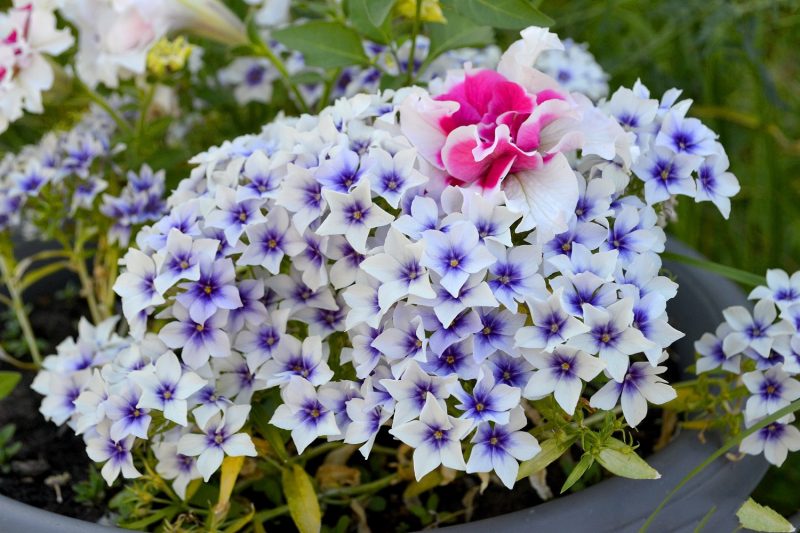
For a lazy garden, phlox is optimally suited. They hit a huge amount of flowers. There are species that change their shade depending on the lighting. Gardeners compare them with weeds, because phloxes take root well in any soil and grow rapidly.
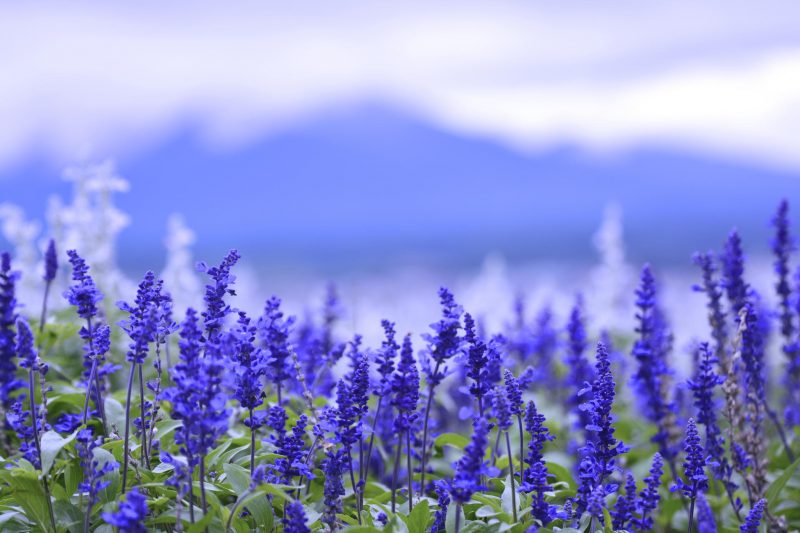
A charming aroma will be presented by flower beds with pinkish-purple sage inflorescences. The plant blooms all summer and has gray-green leaves with white villi. There are over 900 types of sage. All of them are resistant to winter cold.
It is difficult to say which plant is the most unpretentious. In any case, everyone has their own taste preferences.












